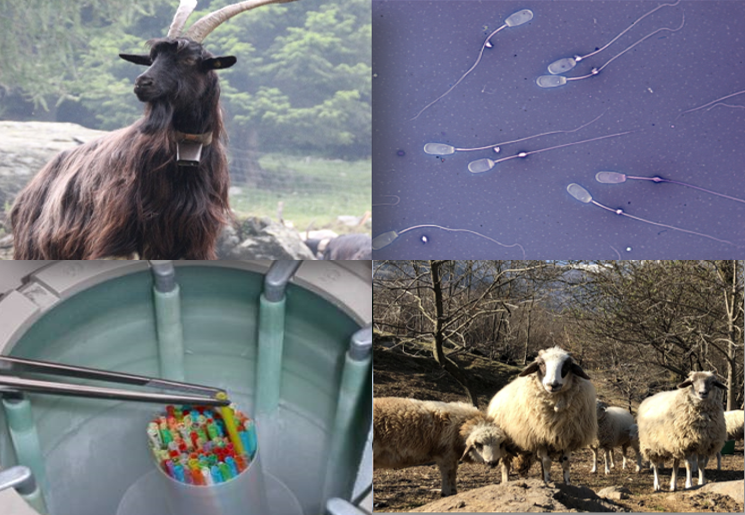
At global level there is worldwide consensus about the global decline of farming local breeds in marginal areas, with consequently loss of biodiversity, of typical products, of agroecosystems and of environmental, landscape and cultural value. Effective and participatory conservation strategies are therefore needed to stop this phenomenon. The optimal conservation strategy indicated by FAO is to keep the breeds within the traditional production systems (in situ) alongside it the preservation of genetic material in special cryobanks. Cryoconservation, in term of freezing of semen, ova, embryos or tissues in liquid nitrogen at – 196°C, provides backup in case of genetic problems in the population of conservation interest, and becomes an election strategy when in situ conservation strategies are ineffective to maintain genetic variability and avoid the extinction of the breed.
These problems are addressed by the Institute of Agricultural Biology and Biotechnology of the National Research Council of Italy, in collaboration with the Faculty of Veterinary Medicine of the University of Milan, which since the 90s have been concerned to preserve animal genetic resources. During these years they promoted the creation of the “Criobanca del Germoplasma Animale – IBBA-CNR”, consisting of samples of genetic material, mainly sperm, collected from local livestock breeds and stored as genetic reserve purposes.
The semen stored has been collected within the framework of several research projects at European, national and regional level with the common objective of preserve Italian cattle, goat, sheep and pig breeds.
Different methods are used for the collection of semen, ranging from the classic collection with artificial vagina to the use of an innovative method for the collection and storage of seminal material, which consists in epididymal spermatozoa collection from donors intended for slaughter for food purposes, who died accidentally or after surgical castration. The latter method, recently applied to the creation of the farm animal cryobank, has been used in order to overcome some technical difficulties, first of all the difficulty of finding in local breeds, usually raised in wild area, donors accustomed to human contact and trained to collect semen.
After collection, the seminal material of each donor is evaluated for the main qualitative characteristics: volume, sperm concentration, motility, vitality and presence of morphological abnormalities, with advanced methods. Semen samples are then cryopreserved and stored in liquid nitrogen at -196ºc. In addition, for each donor, blood and hair were stored for future DNA extraction.
The location of the “Criobanca del Germoplasma Animale – IBBA-CNR” was set up at the IBBA headquarters in Lodi, paying particular attention to the safety of personnel and stored material. To ensure this, the Cryobank was equipped with a system for detecting the levels of environmental oxygen saturation and for monitoring the temperatures present in the storage tanks. The latter consists of special probes connected to a software that in case of higher temperature sends via web an alert message to the personnel involved in the cryobank activities.
Currently in the Cryobank genetic material of Italian bovine, swine and ovicaprine breeds is stored, for a total of about 22,000 doses of semen collected from 218 donors.
Thanks to the efforts of the Cryobank, of many breeders and of the Institutions, it has been possible to preserve over the year’s genetic material of 2 cattle breeds (Varzese and Burlina), of 5 goat breeds (Frisa, Garganica, Nicastrese, Orobica, Nera di Verzasca), of 6 sheep breeds (Brianzola, Ciuta, Comisana, Gentile di Puglia, Massese, Ovino delle Langhe) and of 5 pig breeds (Casertana, Cinta Senese, Mora Romagnola, Nero delle Alpi and Nero Siciliano).
The Cryobank is in constant updating and expansion both in terms of new breeds than breeders involved; the next breeds that will be consider in this genetic rescue are the Bionda dell’Adamello goat breed and the Modenese-Val Padana cattle breed.
Italian goats, sheep, cattle and pig breeds can therefore be safe.
Authors: Flavia Pizzi, Federica Turri